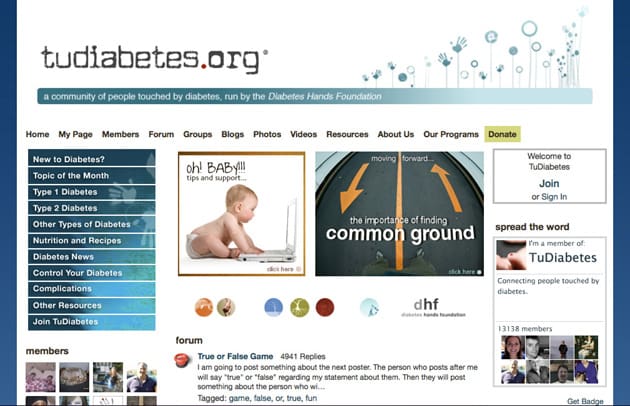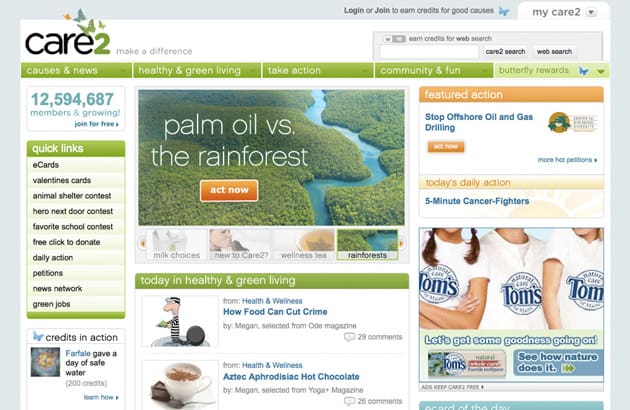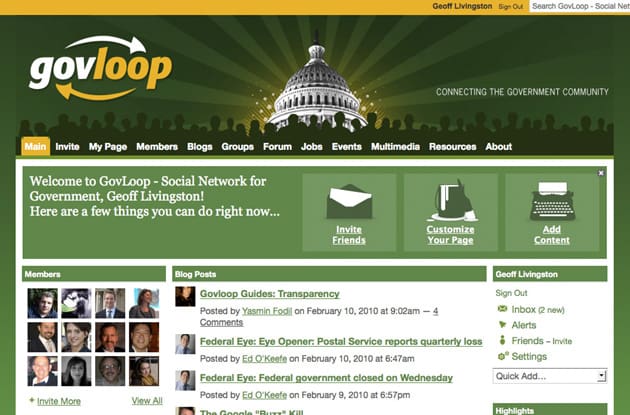From Mashable, view original post
So much conversation about social networking revolves around Twitter and Facebook, but in actuality these networks are just the tip of the iceberg. From general networks like Wiser Earth and Care2, to cause specific networks like PickensPlan and the Sierra Club’s Activist Network, there’s a hotbed of social activity occurring in private communities. Non-profit oriented networks use a wide variety of social tools to foster community, including their own white label communities.
Non-profits use white label platforms like Ning to connect with their communities. Ning serves 1.6 million networks (see Mashable’s Six Ways to Use Ning post). “What we’re seeing organizations and non-profits use Ning for is to develop a deeper layer of conversation and engagement with their supporters and advocates,” said Ning’s Morgan Seal. “Their memberships are those that are looking for a more contextual social experience around the things they care about most.”
Here are five tips for non-profits considering their own white label community.
1. The Cause is the Purpose

The cause is the purpose of the network. Don’t build a network for your organization’s website. The mission of the site needs to revolve around the general common bond a non-profit has with its stakeholder community.
“I feel we may be successful because we deeply believe in the importance of community and what it does to people touched by diabetes,” said Manny Hernandez, president of the Diabetes Hands Foundation, which runs the 13,000 person TuDiabetes network. “We have seen so many people come back to us and say: ‘I have had diabetes for X many years. I felt so alone. I never knew there were SO many people who felt exactly like me.’”
2. Listen

Listening to your community remains a core social media principle. When considering building a cause or organization-specific network, listening can be critical in driving community requirements for function and content.
“I think it’s imperative to have a good ‘listening and monitoring’ plan in place to see what their stakeholders are doing online in public spaces — basically to figure out what their audience’s capacity is for collaboration and collective action online in general,” said Maddie Grant, Chief Social Media Strategist for Social Fish. “They should then be able to figure out whether that activity could translate to engagement in their own community site.”
3. Choose a Platform that Serves Your Community’s Needs

Some networks enable privacy; others integration with larger networks. Still others offer great information sharing via wikis. When considering the many white label community options avalaible, try to understand what your community’s needs are before setting up shop.
“Our community had a unique need for a secure and private space where Iraq and Afghanistan veterans could connect with one another, share stories, offer support, and know that the people they’re interacting with share many of the same life experiences,” said Chrissy Stevens, Communications Director of Iraq and Afghanistan Veterans of America (IAVA). “We spent months assessing our options for starting a white-label social network, and Ning was the only platform that offered the right combination of privacy controls, quality user experience, easy administration and customization, and ongoing support.”
4. Offer Great Value to Your Network

The classic community mistake is to use a network to drive information out into the public as opposed to creating a compelling experience for members. Sometimes that means getting out of the way. Providing value includes a dynamic environment where members interact and drive conversation, participate in activity they can’t find on general social networks, and receive acknowledgment.
“A social network needs to deliver value. I don’t think that you should be sending the members links to your research and reports 5 times a day,” said Holly Ross, Executive Director, NTEN: The Nonprofit Technology Network. “A theater company may be able to serve its patrons by providing a social space for the patrons to discuss play writing, set design, and/or the latest shows from the company. A health organization may serve its clients by giving them a space to talk to and support one another privately.”
5. Use the General Networks as Beachheads

It’s smart to include Twitter and Facebook functionality in your general strategy. In many ways, there’s a larger conversation occurring and the general networks can serve as beachheads to bring people back to your network. Conversely, integrating Twitter and Facebook allows for people within your network to talk about your activities in the larger context.
“Even though we run our own niche social network, we are heavily engaged on Twitter, Facebook, and LinkedIn,” said Steve Ressler, founder of GovLoop. “Plus, we speak a lot at in-person events where lots of government folks attend. This draws a lot of our membership and engagement.”
“They are in a way their own communities, but we are OK with the fact that not all conversations that start through our Twitter account or our FaceBook page end up on TuDiabetes or EsTuDiabetes,” said TuDiabetes’ Manny Hernandez. “Put another way, people will have conversations where it’s most convenient to them and groups creating online communities need to be mindful of this.”

